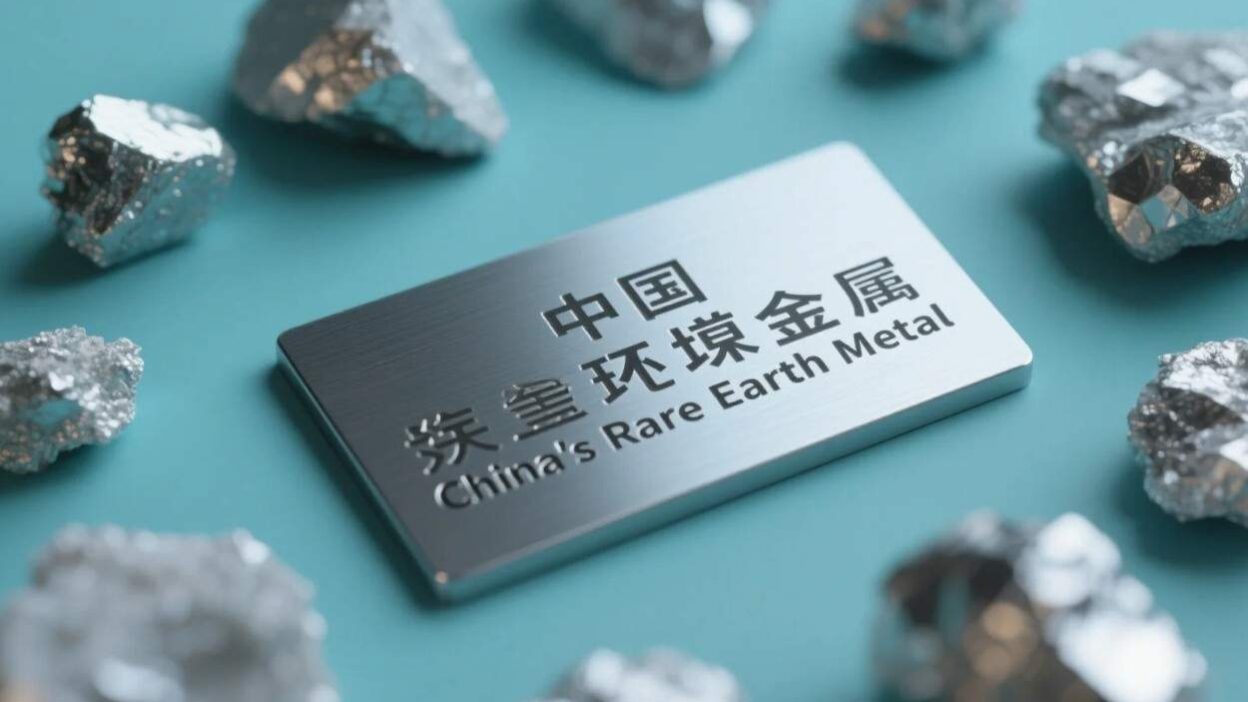Global industries, particularly the automotive sector, are facing a mounting crisis as China implements strict controls over the export of rare earth metals and their associated magnets. Beijing is wielding these critical materials as a tool of geopolitical pressure, creating escalating tensions with Europe and threatening global supply chains worldwide.
Immediate Impact on Production Lines
The crisis has manifested dramatically across manufacturing floors within just a few weeks. Since China imposed restrictions on the export of certain strategic minerals in early April, particularly “heavy” rare earth elements and magnets derived from them, a supply bottleneck has emerged that affects numerous global industries heavily dependent on these materials. The automotive sector has been among the first to feel the repercussions.
Japanese automaker Suzuki was forced to suspend production of its “Swift” model on May 26 due to shortages of components derived from rare earth elements, according to the Nikkei economic newspaper. Later that same month, American automotive giant Ford halted production of its four-wheel-drive “Explorer” model for an entire week after one of its suppliers ran out of magnets made from rare alloy materials.
The crisis has also reached emerging markets, with Bajaj, one of India’s largest automotive manufacturers, confirming that the continuation of this crisis would “significantly” impact its electric vehicle production in July.
European Automotive Industry Under Pressure
On June 4, the European automotive industry revealed the extent of its exposure to this crisis. According to the European Automotive Suppliers Association (CLEPA), “these restrictions have led to the shutdown of several production lines and the closure of some factories in Europe, with the impact expected to worsen in the coming weeks as inventories are depleted.”
German luxury automaker BMW confirmed that some of its suppliers have been affected, while Sylvain Brunet, president of the coordination committee for automotive supplier industries in France, stated that “the situation has entered crisis management mode.” Jean-Louis Bisch, president of the Federation of Vehicle Equipment Industries, referred to an “economic war in which Europe possesses cards that can be used.”
Diplomatic Tensions and Trade War Spillover
EU Trade Commissioner Maroš Šefčovič publicly expressed his concerns following his meeting with Chinese Trade Minister Wang Wentao, stating: “The situation is worrying in the European automotive industry sector, and indeed in industry in general, given that rare earth elements and permanent magnets are very necessary for industrial production.”
The trade war between the United States and China indirectly affects manufacturers from other countries who have no connection to the dispute. In early April, amid escalating mutual tariff impositions between the world’s two largest economic powers, Beijing quietly announced that Chinese companies exporting heavy rare earth elements and their derivatives must obtain prior licensing for each foreign client.
Beijing justifies the export restrictions on grounds related to national security and non-proliferation commitments, given the use of these elements in missile manufacturing and nuclear applications. However, these materials represent an important pressure tool for China to respond to American restrictions on the semiconductor sector, especially after Washington threatened to impose sanctions on companies and countries using Huawei chips.
Following a phone call with Chinese President Xi Jinping on June 5, U.S. President Donald Trump stated that the problem had been resolved, adding: “There should be no problem anymore regarding difficulties with rare earth element products.”
China’s Dominant Market Position
This leverage highlights China’s enormous capacity to inflict damage on other countries, demonstrated through several key statistics:
- Production Dominance: China controls approximately 70% of global rare earth element production
- Processing Monopoly: China controls 99% of rare metal refining and 90% of global production, equivalent to about 200,000 tons annually of permanent magnets made from metallic alloys and rare earth elements
These magnets are now used across all mechanical and technological fields. The automotive industry is among the largest consumers, utilizing them in speakers, windshield wiper mechanisms, braking systems, electric seat adjustment, as well as in electric and thermal engines.
Alexander Marian, a consultant at AlixPartners in Paris, estimates that “a vehicle with a thermal engine contains between 400 and 500 grams of rare metals valued between $2 and $50. In a hybrid car, the quantity reaches 1 to 5 kilograms, valued between $50 and $200. This is marginal in terms of the car’s total value, but essential for production.”
Licensing Bottlenecks and Bureaucratic Hurdles
Many industrialists worldwide expected China to halt supplies only to the American defense sector, but these expectations quickly evaporated. Export licenses are now granted in a limited and intermittent manner, with local officials in Chinese provinces appearing to exercise excessive scrutiny before approving license applications.
Hundreds of applications have been submitted since April, but only about a quarter have received approval, according to the European Automotive Suppliers Association, which denounces non-transparent procedures that vary from region to region, sometimes rejecting applications for purely formal reasons.
The slow facilitation of exports in China stems from local officials’ fears of making mistakes before the central authority. Thomas Kruymer, editor of the “Rare Elements Monitor” newsletter in Singapore, explained: “There is an excessive reaction from Chinese bureaucracy to ensure that rare elements do not leave their regions to reach the American military-industrial complex.”
However, a European industrialist residing in China, who requested anonymity, disputed this interpretation, confirming that most elements exported to Europe are used for civilian purposes, making process acceleration possible, and he doesn’t believe the reason is purely bureaucratic.
Alternative Strategies and Market Adaptations
Some companies have turned to Japan, which built strategic reserves after 2016 tensions and rising prices of two rare elements. The option of purchasing ready-made parts to avoid licensing is also being considered, according to Alexander Marian, but this could increase the suffering of European equipment suppliers, especially in the automotive sector that relies on continuous flow systems, unlike the aviation industry which maintains larger inventories.
However, Thomas Kruymer seeks to calm tensions, considering that since China “possessed production capacity equivalent to the highest estimate of global needs by 2030,” it has no interest in causing long-term damage to countries other than the United States, so as not to push them to strengthen their strategies for self-reliance.
Geopolitical Implications and Future Negotiations
Rare earth elements have become a contentious file between China and Europe, where China holds the upper hand, unlike the electric vehicle file on which Brussels imposed high tariffs since October 2024. For European Commission President Ursula von der Leyen, who will visit Beijing in July, this file will be among the most prominent issues on the negotiation table.
The current crisis demonstrates how critical materials can become weapons in economic warfare, forcing global industries to reconsider their supply chain dependencies and potentially accelerate efforts toward supply chain diversification and domestic production capabilities. As the standoff continues, the automotive industry and other manufacturing sectors face difficult choices between short-term production needs and long-term strategic independence.
The rare earth crisis serves as a stark reminder of the vulnerabilities inherent in globalized supply chains and the growing intersection between geopolitics and industrial production in an increasingly multipolar world.



